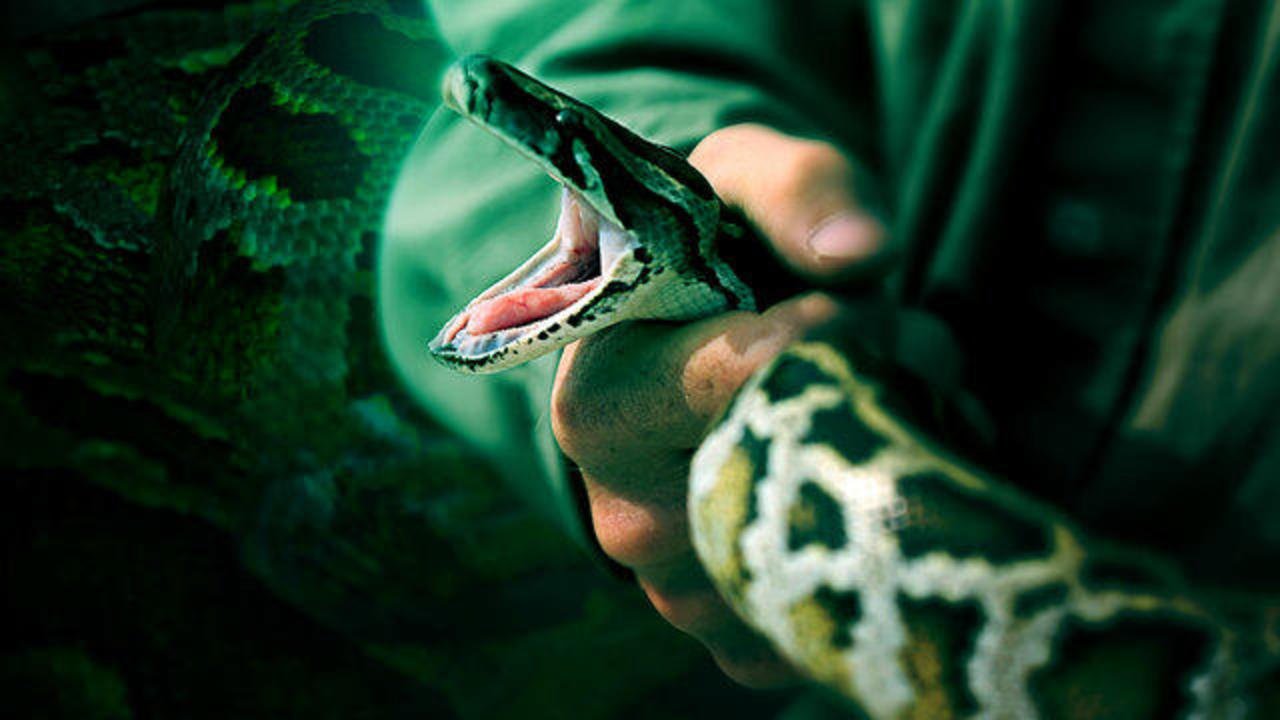The Ever-Growing Threat of Invasive Snakes in Florida

Florida has long been known for its warm weather, pristine beaches, and unique wildlife. However, over the past few decades, this tropical paradise has faced a growing threat from invasive species of snakes. The most notorious of these is the Burmese python, which has established itself in the state’s vast wetlands and poses serious ecological and environmental challenges. As these snakes continue to proliferate, local authorities, conservationists, and scientists are racing against time to control the population and mitigate the damage they cause.
How Did Invasive Snakes Get to Florida?
One of the most surprising aspects of the invasive snake problem in Florida is that many of these creatures are not native to the area. The Burmese python, for example, originates from Southeast Asia. But how did they end up in Florida?
In the 1970s and 1980s, exotic animals like pythons became popular pets in the United States. Florida, with its pet-friendly climate and lax regulations, became a hotspot for the exotic pet trade. Unfortunately, many pet owners who bought these large snakes were unprepared for the responsibility of caring for a creature that could grow to be 20 feet long and weigh more than 200 pounds. When the snakes became too large to handle, some were released into the wild. Others escaped their enclosures during hurricanes or other natural disasters.
The Everglades, a sprawling, subtropical wetland in South Florida, provided the perfect habitat for these pythons to thrive. With abundant food sources such as small mammals, birds, and reptiles, the snakes quickly established a breeding population. Today, it’s estimated that tens of thousands of Burmese pythons now call the Everglades home.
The Ecological Impact of Invasive Snakes
The introduction of these non-native snakes has had a devastating impact on Florida’s ecosystem. Pythons are apex predators, meaning they sit at the top of the food chain. In the Everglades, they have virtually no natural predators, allowing their population to grow unchecked.
One of the most significant consequences of the python invasion is the decline of native wildlife. Studies have shown that populations of small mammals, such as rabbits and raccoons, have drastically decreased in areas where pythons are present. The disappearance of these animals has had a ripple effect on the entire ecosystem. For example, raccoons and opossums are important for controlling insect populations, while small mammals serve as food for native predators like alligators and panthers. Without them, the balance of the ecosystem is thrown off, potentially leading to further ecological damage.
Bird species are also at risk. Pythons have been known to prey on endangered birds, such as the wood stork, further threatening species that are already struggling to survive. Reptiles, including turtles and alligators, are not immune to the python’s appetite, and there have been documented cases of pythons attacking and killing alligators, which were once thought to be the dominant predators of the Everglades.
Expanding Beyond the Everglades
While the Burmese python is most closely associated with the Everglades, its range is not limited to this area. There is growing concern that pythons could expand into other parts of Florida, and potentially beyond. As the climate warms, scientists worry that the snakes could find suitable habitats in other parts of the southeastern United States, putting even more ecosystems at risk.
There have already been sightings of pythons outside of the Everglades, in areas such as Naples, Miami, and even as far north as Tampa. If these snakes can establish breeding populations in these new areas, it could lead to even greater ecological disruption.
Government and Conservation Efforts
Recognizing the severity of the situation, the state of Florida has implemented several measures to control the python population. One of the most high-profile efforts is the annual Python Challenge, a competition in which participants are encouraged to capture and remove as many pythons as possible from the wild. In 2023, the competition attracted hundreds of participants, and over 200 snakes were removed from the Everglades during the month-long event.
While events like the Python Challenge are a step in the right direction, they are far from a comprehensive solution. Pythons are incredibly difficult to track and capture, especially in the dense, swampy terrain of the Everglades. The snakes are also excellent at hiding, making it nearly impossible to determine the true size of their population. Some experts believe that the number of pythons in the Everglades could be as high as 300,000, and removing them all is a daunting task.
In addition to these efforts, researchers are exploring more innovative solutions to the Python problem. Some are investigating the use of pheromones to attract and trap pythons, while others are experimenting with genetically modifying snakes to prevent them from reproducing. There is also ongoing research into the potential use of tracking dogs and drones to locate and capture pythons more efficiently.
Other Invasive Snake Species
While the Burmese python is by far the most well-known invasive snake in Florida, it is not the only one. Other non-native snakes, such as the African rock python, the reticulated python, and the boa constrictor, have also been found in the state. Like the Burmese python, these snakes are large, aggressive predators that pose a significant threat to Florida’s native wildlife.
The presence of multiple invasive snake species further complicates efforts to control the problem. Each species has its own unique behaviors and habitat preferences, making it difficult to develop a one-size-fits-all solution. Moreover, there is the risk that these different species could hybridize, creating new challenges for conservationists and wildlife managers.
What Can Be Done?
The battle against invasive snakes in Florida is far from over, but several steps can be taken to mitigate the problem. First and foremost, stricter regulations on the importation and ownership of exotic pets are needed. While Florida has implemented some measures in this regard, more can be done to prevent future invasions.
Finally, continued research and investment in new technologies are essential. Whether it’s through the use of drones, genetic modification, or new trapping techniques, innovative solutions will be key to controlling the python population and protecting Florida’s unique ecosystems.
Conclusion
Florida’s invasive snake problem is a cautionary tale about the unintended consequences of the exotic pet trade. What started as a few released pets has now become a full-blown ecological crisis, with far-reaching impacts on the state’s wildlife and ecosystems. While efforts are underway to control the python population, the battle is far from won. Only through a combination of public awareness, government action, and scientific innovation can we hope to protect Florida’s fragile ecosystems from further harm.



